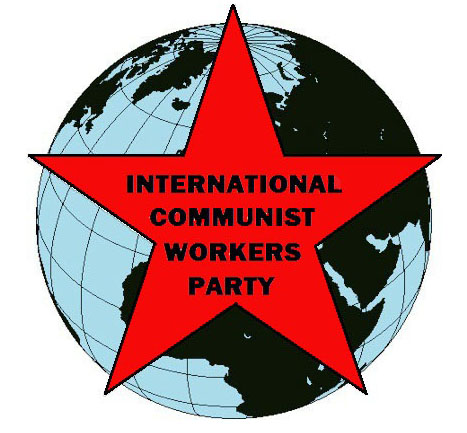
 |
FIGHT FOR COMMUNISM! |
International Communist Workers Party | |
"Without revolutionary theory there can be no revolutionary movement" -- V. I. Lenin
Previous articles in this series have discussed Mao Zedong’s philosophical essays up to the defeat of the nationalist Guomindang (GMD) and the formation of a “people’s republic” in 1949. We continue to discuss his role in the philosophical struggles that took place in the 1950s, ‘60s and ‘70s.
In 1957 Mao gave a major speech that was prompted by the right-wing revolt in 1956 against the socialist government of Hungary. The Communist Party of China (CPC) was concerned to prevent something similar from happening in China and Mao tried to make nice with the Chinese bourgeoisie. He introduced a new dialectical concept for this purpose, the distinction between “contradictions among the people” and “contradictions with the enemy.” This distinction has some validity, since conflicts among the masses should certainly not be treated the same way as conflicts between the masses and the capitalist class, which can be resolved only by communist revolution.
“The People” and “The Enemy”
Mao used the concept of “the people,” however, as a flexible category to describe whatever opportunistic alliance the CPC wanted to make with the enemies of the working class at some particular time. He included even feudal landlords and the capitalist GMD among “the people” during the war against Japanese imperialism. After the war, the landlords and the GMD were moved into the category of “the enemy.”
Mao admitted that capitalists exploited workers, but–amazingly—claimed that there is a “fundamental identity of interests” between the capitalists and the working class! He claimed that the “national bourgeoisie,” those capitalists not working closely with foreign imperialists, were part of “the people,” and that the contradictions between the working class and these capitalists could be resolved peacefully if they were properly handled by the CPC. The violent struggles of the Cultural Revolution in the 1960s showed that this idea was merely wishful thinking that strengthened the enemies of the working class.
The Great Leap Forward
From 1957 through 1959 two major overlapping movements took place in China, the Great Leap Forward (GLF), a huge program of economic construction, and the organization of peasants into “People’s Communes,” which was seen as a major step toward communism. Major mistakes in economic planning, topped off by natural disasters, led to big failures in food production. The resulting famine killed millions of people.
The failures of the GLF intensified the contradiction between the pro-communist Left and the pro-capitalist Right inside the CPC. In 1966 this contradiction led to the Cultural Revolution, but in the late ‘50s and early ‘60s it led to a series of philosophical disputes over issues raised by the GLF. Meeting with Mao in late 1958, philosopher Li Da accused Mao of excessive reliance on the “subjective initiative of the masses,” that is, calling on the workers and peasants to commit themselves to making a big effort. Li Da accused Mao of having a “fever” in his brain. He attacked GLF slogans about mass mobilization that Mao defended, like “Think boldly, speak boldly and act boldly,” claiming these ideas were not Marxist. This became a common theme of the Right in the CPC.
The truth is that it was not enthusiasm of the masses that caused failures in food production, but bad leadership from the CPC. The party diverted enormous amounts of labor from agriculture to futile projects, including the attempt to make steel in a huge number of small “backyard blast furnaces,” which produced worthless metal and wasted resources.
Leftists explained that the initiative of the masses is a material force because there is a “dialectical identity of thought and being.” This did not mean that thinking and matter (“being”) are the same, which is an idealist view. It meant that the characteristics of the material world affect our thinking when we learn from practice, and what we think affects the world by guiding human practical actions. This “dialectical identity” idea became the subject of a long debate between Left and Right.
In 1963, Mao endorsed the dialectical identity view in a short essay called “Where Do Correct Ideas Come From?” “Matter,” he wrote, “can be transformed into consciousness and consciousness into matter.” These transformations are “phenomena of everyday life,” since our thinking is affected by the world and our ideas guide the changes we make in the world.
Marx and Engels had already said similar things, so this idea was not new. It is, however, an idea of fundamental importance for the communist movement. It means that the masses can change the world by learning and then applying correct political ideas in the fight for communism.